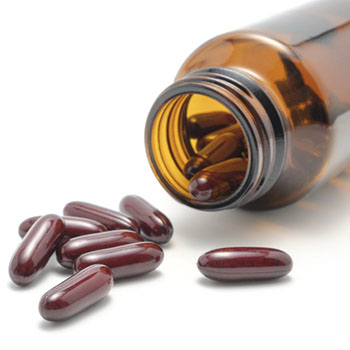Brown, D. H., Hansson, R., Oosthuizen, F., & Sumner, N. (2015). β‐methylphenylethylamines: Common fragmentation pathways with amphetamines in electrospray ionization collision‐induced dissociation. Drug Testing and Analysis, 8(3-4), 344–350. doi:10.1002/dta.1816
Chołbiński, P., Wicka, M., Kowalczyk, K., Jarek, A., Kaliszewski, P., Pokrywka, A., . . . Kwiatkowska, D. (2014). Detection of β-methylphenethylamine, a novel doping substance, by means of UPLC/MS/MS. Analytical and Bioanalytical Chemistry, 406(15), 3681–3688. doi:10.1007/s00216-014-7728-5
Cohen, P. A., Bloszies, C., Yee, C., & Gerona, R. (2016). An amphetamine isomer whose efficacy and safety in humans has never been studied, β-methylphenylethylamine (BMPEA), is found in multiple dietary supplements. Drug Testing and Analysis, 8(3-4), 328–333. doi:10.1002/dta.1793
Cohen, P. A., Avula, B., Venhuis, B., Travis, J. C., Wang, Y.-H., & Khan, I. A. (2017). Pharmaceutical doses of the banned stimulant oxilofrine found in dietary supplements sold in the USA. Drug Testing and Analysis, 9(1), 135–142. doi:10.1002/dta.1976
Cohen, P. A., Travis, J. C., Keizers, P. H. J., Deuster, P., & Venhuis, B. J. (2017). Four experimental stimulants found in sports and weight loss supplements: 2-amino-6-methylheptane (octodrine), 1,4-dimethylamylamine (1,4-DMAA), 1,3-dimethylamylamine (1,3-DMAA) and 1,3-dimethylbutylamine (1,3-DMBA). Clinical Toxicology, 56(6), 421–426. doi:10.1080/15563650.2017.1398328
Cohen, P. A., Wen, A., & Gerona, R. (2018). Prohibited stimulants in dietary supplements after enforcement action by the U.S. Food and Drug Administration. JAMA Internal Medicine, 178(12), 1721–1723. doi:10.1001/jamainternmed.2018.4846
Eichner, S., Maguire, M., Shea, L. A., & Fete, M. G. (2016). Banned and discouraged-use ingredients found in weight loss supplements. Journal of the American Pharmacists Association, 56(5), 538–543. doi:10.1016/j.japh.2016.03.013
National Center for Biotechnology Information. PubChem Database: 2-Phenylpropylamine, CID=11398. Retrieved 29 May 2019 from https://pubchem.ncbi.nlm.nih.gov/compound/2-Phenylpropylamine
Pawar, R. S., Grundel, E., Fardin-Kia, A. R., & Rader, J. I. (2014). Determination of selected biogenic amines in Acacia rigidula plant materials and dietary supplements using LC–MS/MS methods. Journal of Pharmaceutical and Biomedical Analysis, 88, 457–466. doi:10.1016/j.jpba.2013.09.012
Rasmussen, N., & Keizers, P. H. J. (2016). History full circle: ‘Novel’ sympathomimetics in supplements. Drug Testing and Analysis, 8(3-4), 283–286. doi:10.1002/dta.1852
Rickli, A., Hoener, M. C., & Liechti, M. E. (2019). Pharmacological profiles of compounds in preworkout supplements (“boosters”). European Journal of Pharmacology, 859, Article 172515. doi:10.1016/j.ejphar.2019.172515
Schindler, C. W., Thorndike, E. B., Rice, K. C., Partilla, J. S., & Baumann, M. H. (2019). The supplement adulterant β-methylphenethylamine increases blood pressure by acting at peripheral norepinephrine transporters. Journal of Pharmacology and Experimental Therapeutics, 369(3), 328–336. doi:10.1124/jpet.118.255976
U.S. Food & Drug Administration. (2017). BMPEA in dietary supplements. Retrieved 1 May 2019 from https://www.fda.gov/food/dietary-supplement-products-ingredients/bmpea-dietary-supplements
Yun, J., Kwon, K., Choi, J., & Jo, C.-H. (2017). Monitoring of the amphetamine-like substances in dietary supplements by LC-PDA and LC–MS/MS. Food Science and Biotechnology, 26(5), 1185–1190. doi:10.1007/s10068-017-0176-1
Zhao, J., Wang, M., Avula, B., & Khan, I. A. (2018). Detection and quantification of phenethylamines in sports dietary supplements by NMR approach. Journal of Pharmaceutical and Biomedical Analysis, 151, 347–355. doi:10.1016/j.jpba.2018.01.025

